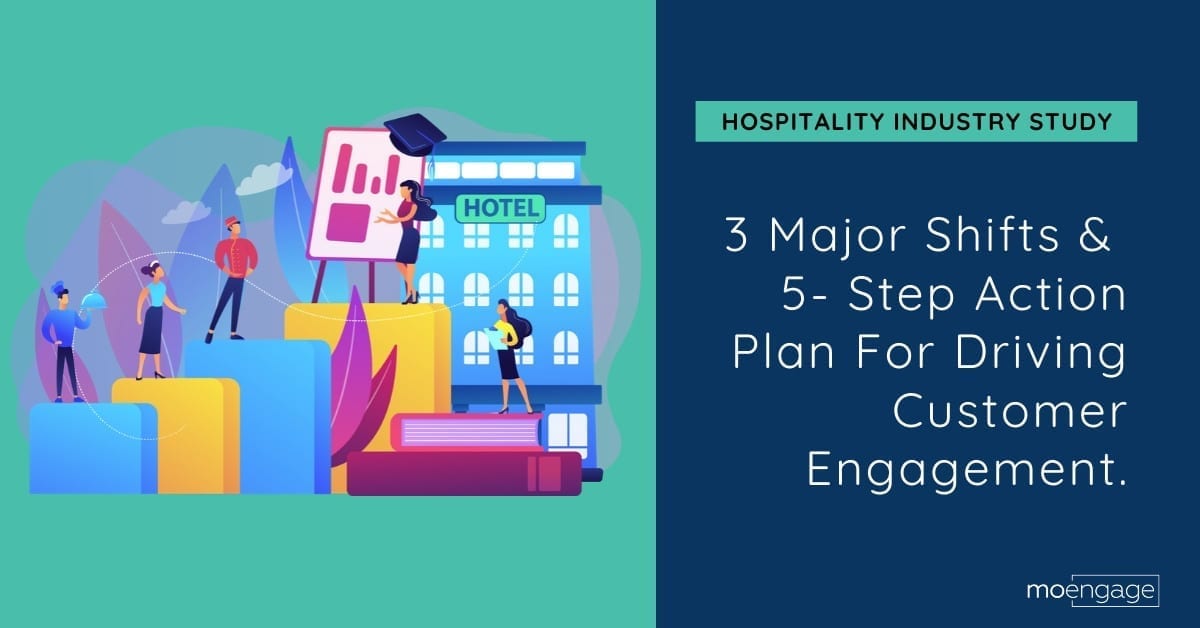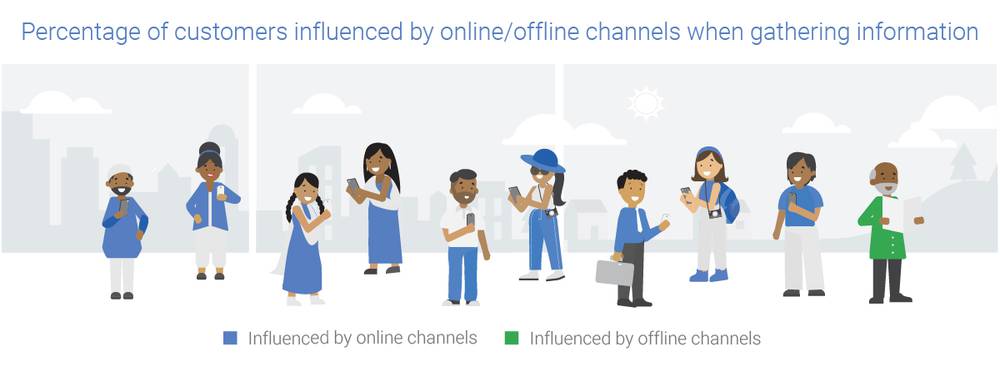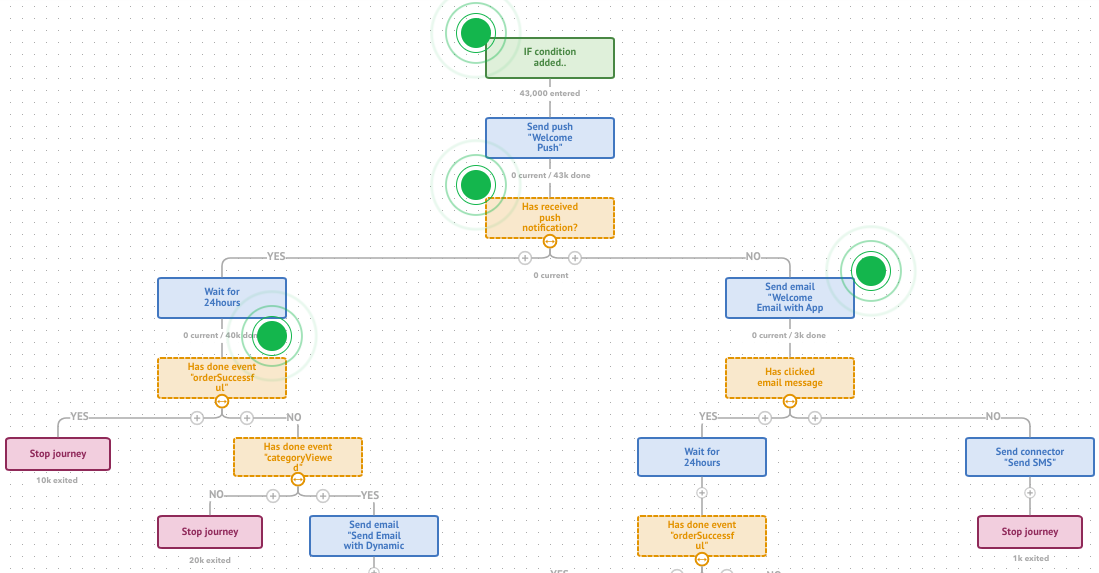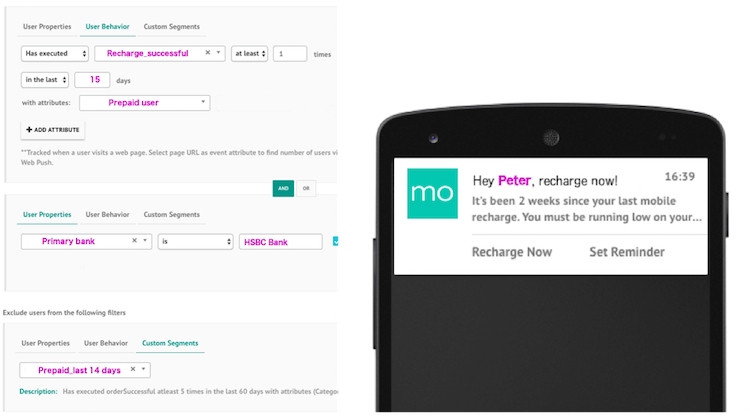How Omnichannel Marketing Boosts Customer Engagement in Hospitality Industry

Reading Time: 7 minutes
The tourism industry in India is a mammoth $234 billion. Naturally, it has a cascading effect on the hospitality industry. As a player in this hugely competitive industry segment, we understand your concerns are manifold. A few of them could be:
- How do I stay on top of the changing market trends? More than ever, people are now making decisions online. It’s all the more important to be where your users are and influence their decision-making process.
- How do I face the competitive challenges in the industry and make a unique proposition? Now is the time to re-think the problems in the industry as opportunities to excel.
- Are there any digital marketing tools out there that can help me make wiser decisions?
- How do industry leaders such as OYO and Treebo gain a market advantage?
| Bonus Content
👉 Beginner’s Guide to Omnichannel Marketing for 2021 [Download Ebook] 👉 Retail Strategies and Omnichannel Engagement Frameworks [Download Ebook] 👉 How hospitality brands are capturing the micro-moments in their users’ journey [Download Ebook] |
In this industry study article, you will find in-depth answers to the above questions and much more. So grab a cup of coffee and read on.
3 Major Shifts In The Landscape Of The Hospitality Industry In India
India has high internet penetration not only in Tier 1 cities but also in Tier 2 and Tier 3 cities. Recently, internet usage in the country crossed the half-billion mark. Digitization has played a pivotal role in changing the landscape of the hospitality industry.
1. 31% jump in online accommodation searches in 2018
Increasingly, more travelers are making reservations online. Gone are the days when calling the hotel or booking through tour operators was the norm. What’s even more interesting is that users who begin their research online are much more expected to show conversions than users who come through other channels, such as tour agencies.
What does it mean for you?
Travel is usually a yearly affair and might be stress-inducing. Online research might begin on a hand-held device but will progress to other devices and locations. It is important not to directly force the viewer down a sales funnel but to help them explore ideas and be inspired in the process. For this, it is integral to have a credible online presence with omnichannel marketing.

2. More segments of travelers are on the horizon
In the last few years, India has welcomed new entrants in the hospitality industry. Today, there are several options available to travelers, be it someone who loves luxury, someone who prefers budget accommodations, or someone who prefers traveling with family. Industry leaders like OYO and Treebo have customized the needs of each of these segments, so it becomes easier for the user to make decisions.
What does it mean for you?
More segments of travelers gives you more chance to tailor make the needs of your end users. The more you segment your travelers based on their online behavior, the better conversion rates you will observe.
This has never been easier to do than today with the help of the right marketing tools. For example, a traveler looking to do a solo trip to Bali would prefer seeing a hostel accommodation with an attached cocktail bar rather than an entire apartment listing with multiple rooms. Sending customized push notifications helps drive customer engagement by a factor of 800%

3. 3x More Experience Searches than Hotel Searches
A survey by Skift revealed that 52.8% of respondents preferred experiential travel and transformative travel, which has made accommodation options such as Airbnb and other hostels popular. The sharing economy and experience economy have become popular hospitality trends among millennials and Gen Z, who prefer to travel unconventionally.
What does it mean for you?
The experiential travel and hospitality space is still fragmented. In the 12 weeks leading to a trip, there is a 3x jump in experience searches compared to hotel searches.
A recent Greenberg research shows that though hotel and transport searches peak around the 6-week mark and slowly die off, experience searches remain strong throughout the 12-week period. This gives you an exciting opportunity to engage with the customer.
Explore opportunities to curate content around the place you’re offering. Personalize the experiences by bringing in a local for a short tour activity & providing a peek into their daily lives. Create campaigns(such as what Booking.com did) and generate more video content(such as what Expedia did) to further engage your customers.
A 5-Step Approach To What You Must Do:
1. Bridge the gap between Research and booking/payment experience
A major chunk of your online visitors fail to convert because they don’t trust a payment experience that doesn’t come across as authentic. You may have a lot of people viewing your product pages but not converting to users. In fact, this is the widest gap in terms of user behavior online – the phase from research to booking and payments.
Partner with online bank gateways or mobile e-wallets to streamline this experience. This is the most effective step, and it shows immediate results. Another way is to ask the users to pay partly or fully later at the assigned date and venue. This increases the factor of trust for the brand by the user.
2. Pivot Digital Marketing tools to drive engagement
Omnichannel Marketing definitely goes a long way here. Your users don’t limit themselves to a particular device through the decision-making process; why should you limit yourself when it comes to your marketing efforts?
Customise your offers for the target segment in as much depth as possible. Use digital touchpoints and consumer insights to make informed decisions. User segmentation is a unique feature that every marketing tool must provide. Check out how we implement this feature for OYO here.

3. Insights from Consumer Tech companies – A gold mine of lessons
Consumer Tech companies such as Xiaomi, Samsung have done a fantastic job of acquiring customers not just from tier 1 cities but also from tier 2 & 3 companies. It’s worthwhile to learn their strategies, which can be applied in your domain.
From social media marketing to offline kiosks to vernacular support for your website, an entire array of action plan is available to choose from.
4. Give a wholesome experience
There’s a huge opportunity when it comes to giving a wholesome experience to your target customers. For example, close to 70% of Indian travelers use buses and trains as primary modes to travel. Explore ways in which you can tie this experience to your product. A package that offers travel, hospitality, and experiences is a win-win situation for all.
This will drive customer loyalty and cater to a huge pain point in the market. Your customers no longer need to worry about separate bookings, since you can give them a one-stop platform for all.
5. Cater to specific customer segments
Don’t leave behind your customer segments that don’t convert easily. Hear their perceptions on all online channels, including social media. For example, if there’s a perception that your brand caters to only premium users, it’s worthwhile to roll out offers for the budget user to break stereotypes and cater to interests across customer segments.
This ties back to point #2 in the 3 Major shifts in the hospitality industry. Such measures go a long way in building your brand identity.

How OYO And Treebo Aced Their Marketing Game
As the competition among hospitality players increased, OYO and Treebo capitalized on marketing to reach out to customers. In this section, I’ll tell you how these big players in the industry worked early on to gain market position.
OYO: This Indian-now-turned-international unicorn has managed to disrupt the hospitality industry by making budget hotels available at standardized rates and services.
While you will find their hard-to-miss red and white circular logos in almost every second street, it is their 360-degree marketing campaign that has helped them grow and expand rapidly within the last seven years.
Although they invested in the conventional marketing route by advertising on TV and print, their primary conversions were seen as a direct result of digital campaigns.
Their innovative digital marketing campaigns include location-based Facebook posts promoting discounts on hotels, remarketing the brand through social media and app push notifications, and through Google Ads and SEO.
Treebo: In just a span of 4 years, Treebo has made a name for itself by combining the best of outdoor digital marketing to create brand awareness to grow your business. They capitalized on their bold stance, “Perfect stay or don’t pay,” and crafted an entire TVC and outdoor campaign around it. This helped them build a strong brand identity.
Besides the conventional marketing strategies, Treebo also focuses on hyper-personalizing the customer experience through email, SMS, push notifications, and exit intent pop-ups. It is here that our platform helped Treebo gain a unique advantage.
How did we help OYO and Treebo improve customer experience?
Unlike cab aggregators or e-commerce apps that are used frequently, hospitality apps are used only when the customer travels. That’s why hospitality companies have to build customer loyalty right at the acquisition stage to drive repeat business. OYO and Treebo have been able to do it with the help of our marketing automation tools.
Both companies wanted to personalize the customer journey by offering them personalized hotel recommendations based on price ranges, location, etc. They wanted to use SMS, emails, and push notifications after segmenting users on multiple factors such as app usage history, location, demographics, etc. Check the links below for the complete case study:
- OYO delivers seamless user engagement by using our omnichannel campaign management tool.
- Treebo implements our marketing automation tool to drive conversion rates
Here’s What You Should Do Next:
|













